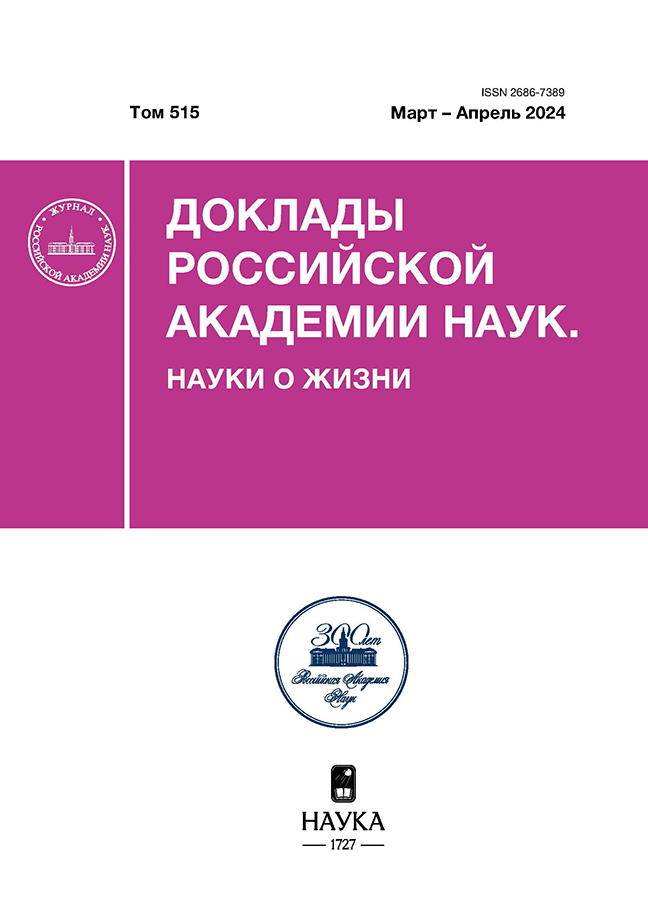Aberrant repair of 8-oxoguanine in short DNA bulges
- 作者: Eroshenko D.A.1,2, Diatlova E.A.1, Golyshev V.M.1, Endutkin A.V.1, Zharkov D.O.1,2
-
隶属关系:
- Institute of Chemical Biology and Fundamental Medicine SB RAS
- Novosibirsk State University
- 期: 卷 515, 编号 1 (2024)
- 页面: 14-18
- 栏目: Articles
- URL: https://cijournal.ru/2686-7389/article/view/651435
- DOI: https://doi.org/10.31857/S2686738924020031
- EDN: https://elibrary.ru/WGASGM
- ID: 651435
如何引用文章
详细
The presence of DNA damage can increase the likelihood of DNA replication errors and promote mutations. In particular, pauses of DNA polymerase at the site of damage can lead to polymerase slippage and the formation of 1–2 nucleotide bulges. Repair of such structures using an undamaged DNA template leads to small deletions. One of the most abundant oxidative DNA lesions, 8-oxoguanine (oxoG), has been shown to induce small deletions but the mechanism of this phenomenon is currently unknown. We have studied the aberrant repair of oxoG, located in one- and two-nucleotide bulges, by the Escherichia coli and human base excision repair systems. Our results indicate that the repair in such substrates can serve as a mechanism for fixing small deletions in bacteria but not in humans.
全文:
作者简介
D. Eroshenko
Institute of Chemical Biology and Fundamental Medicine SB RAS; Novosibirsk State University
Email: dzharkov@niboch.nsc.ru
俄罗斯联邦, Novosibirsk; Novosibirsk
E. Diatlova
Institute of Chemical Biology and Fundamental Medicine SB RAS
Email: dzharkov@niboch.nsc.ru
俄罗斯联邦, Novosibirsk
V. Golyshev
Institute of Chemical Biology and Fundamental Medicine SB RAS
Email: dzharkov@niboch.nsc.ru
俄罗斯联邦, Novosibirsk
A. Endutkin
Institute of Chemical Biology and Fundamental Medicine SB RAS
Email: dzharkov@niboch.nsc.ru
俄罗斯联邦, Novosibirsk
D. Zharkov
Institute of Chemical Biology and Fundamental Medicine SB RAS; Novosibirsk State University
编辑信件的主要联系方式.
Email: dzharkov@niboch.nsc.ru
Corresponding Member
俄罗斯联邦, Novosibirsk; Novosibirsk参考
- Joshua-Tor L., Frolow F., Appella E., et al. // J. Mol. Biol. 1992. V. 225. № 2. P. 397–431.
- Jiao Y., Stringfellow S., Yu H. // J. Biomol. Struct. Dyn. 2002. V. 19. № 5. P. 929–934.
- Shi X., Beauchamp K.A., Harbury P.ЙB., Herschlag D. // Proc. Natl Acad. Sci. U.S.A. 2014. V. 111. № 15. P. E1473–E1480.
- Kunkel T.A., Bebenek K. // Annu. Rev. Biochem. 2000. V. 69. P. 497–529.
- Talhaoui I., Matkarimov B.T., Tchenio T., et al. // Free Radic. Biol. Med. 2017. V. 107. P. 266–277.
- Fleming A.M., Burrows C.J. // DNA Repair. 2017. V. 56. P. 75–83.
- Moriya M., Ou C., Bodepudi V., et al. // Mutat. Res. 1991. V. 254. № 3. P. 281–288.
- Markkanen E., Castrec B., Villani G., Hübscher U. // Proc. Natl Acad. Sci. U.S.A. 2012. V. 109. № 50. P. 20401–20406.
- Pande P., Haraguchi K., Jiang Y.-L., et al. // Biochemistry. 2015. V. 54. № 10. P. 1859–1862.
- Gilboa R., Zharkov D.O., Golan G., et al. // J. Biol. Chem. 2002. V. 277. № 22. P. 19811–19816.
- Kuznetsov N.A., Koval V. V., Zharkov D.O., et al. // Nucleic Acids Res. 2005. V. 33. № 12. P. 3919–3931.
- Sidorenko V.S., Nevinsky G.A., Zharkov D. O. // DNA Repair. 2007. V. 6. № 3. P. 317–328.
- Endutkin A.V., Yudkina A.V ., Zharkov T.D., et al. // Int. J. Mol. Sci. 2022. V. 23. № 21. 13353.
- Tchou J., Bodepudi V., Shibutani S., et al. // J. Biol. Chem. 1994. V. 269. № 21. P. 15318–15324.
- Zharkov D.O., Rosenquist T.A., Gerchman S.E., Grollman A. P. // J. Biol. Chem. 2000. V. 275. № 37. P. 28607–28617.
- Bruner S.D., Norman D.P.G., Verdine G.L. // Nature. 2000. V. 403. № 6772. P. 859–866.
- Fromme J.C., Verdine G.L. // J. Biol. Chem. 2003. V. 278. № 51. P. 51543–51548.
- Lavrukhin O.V., Lloyd R.S. // Biochemistry. 2000. V. 39. № 49. P. 15266–15271.
补充文件











